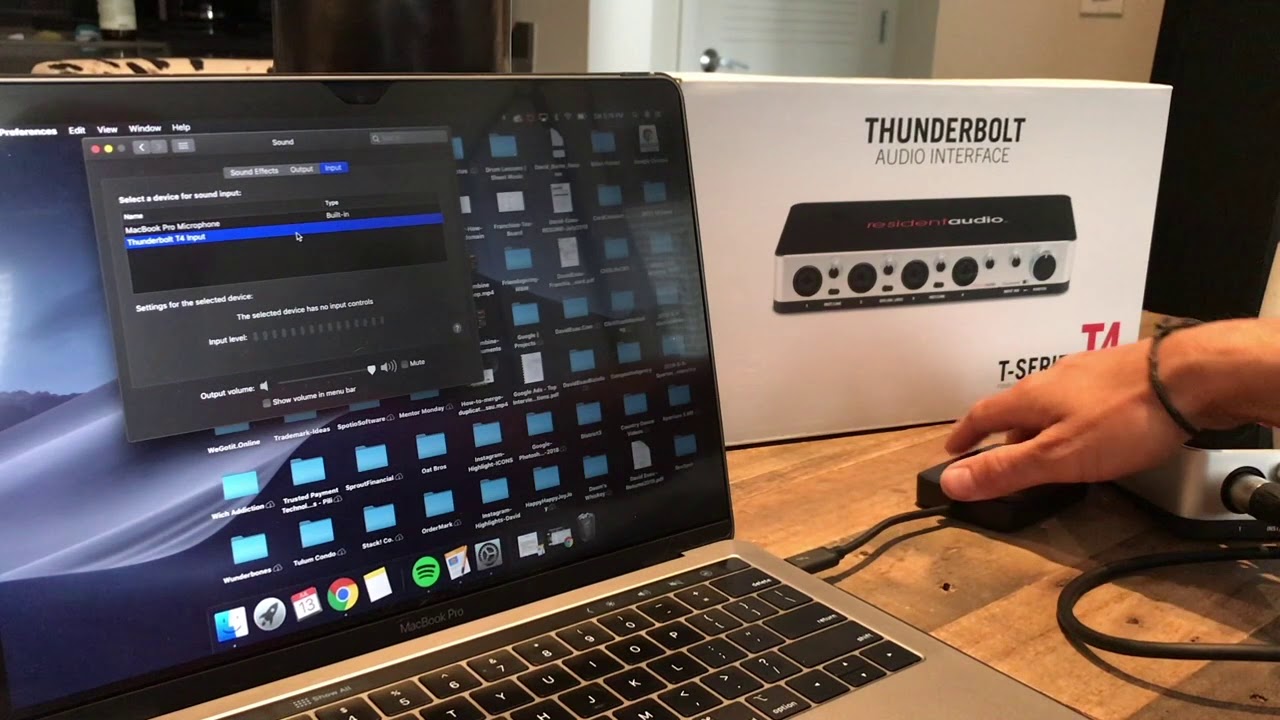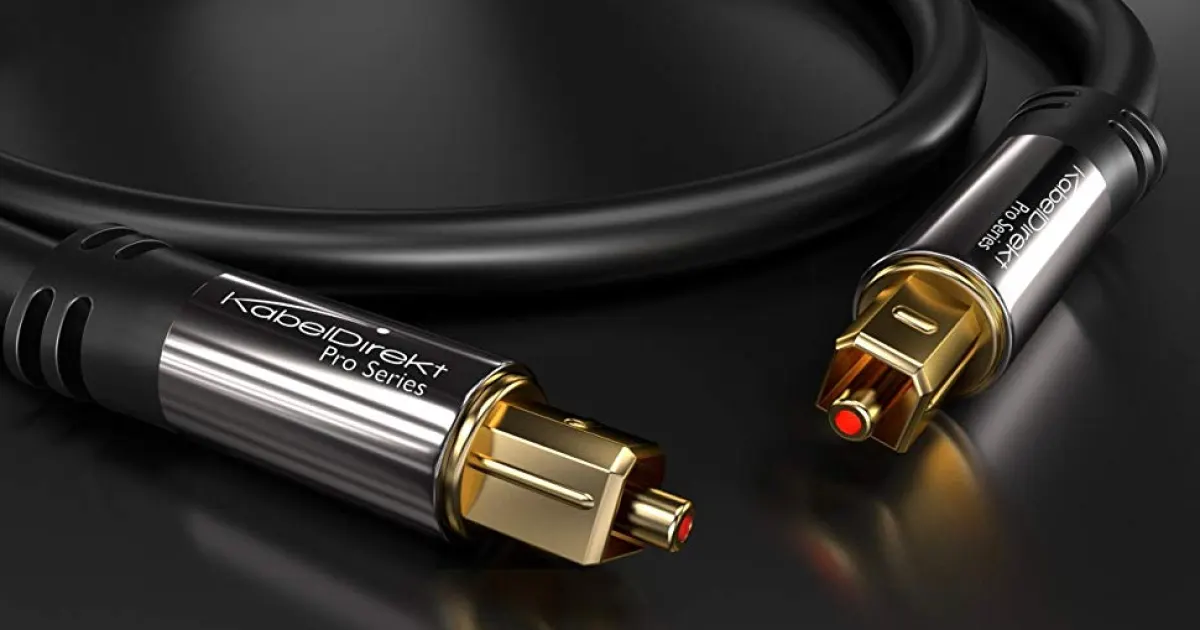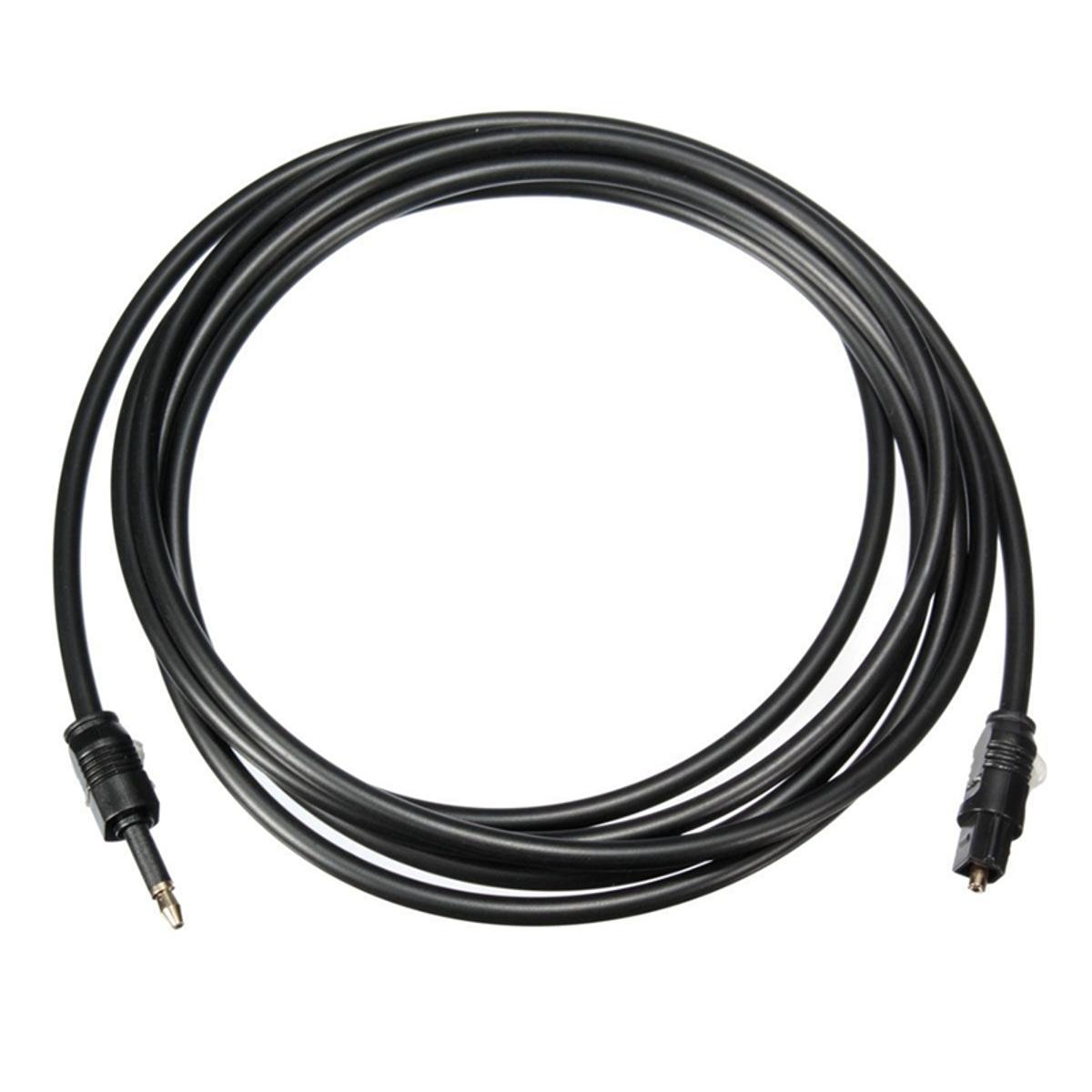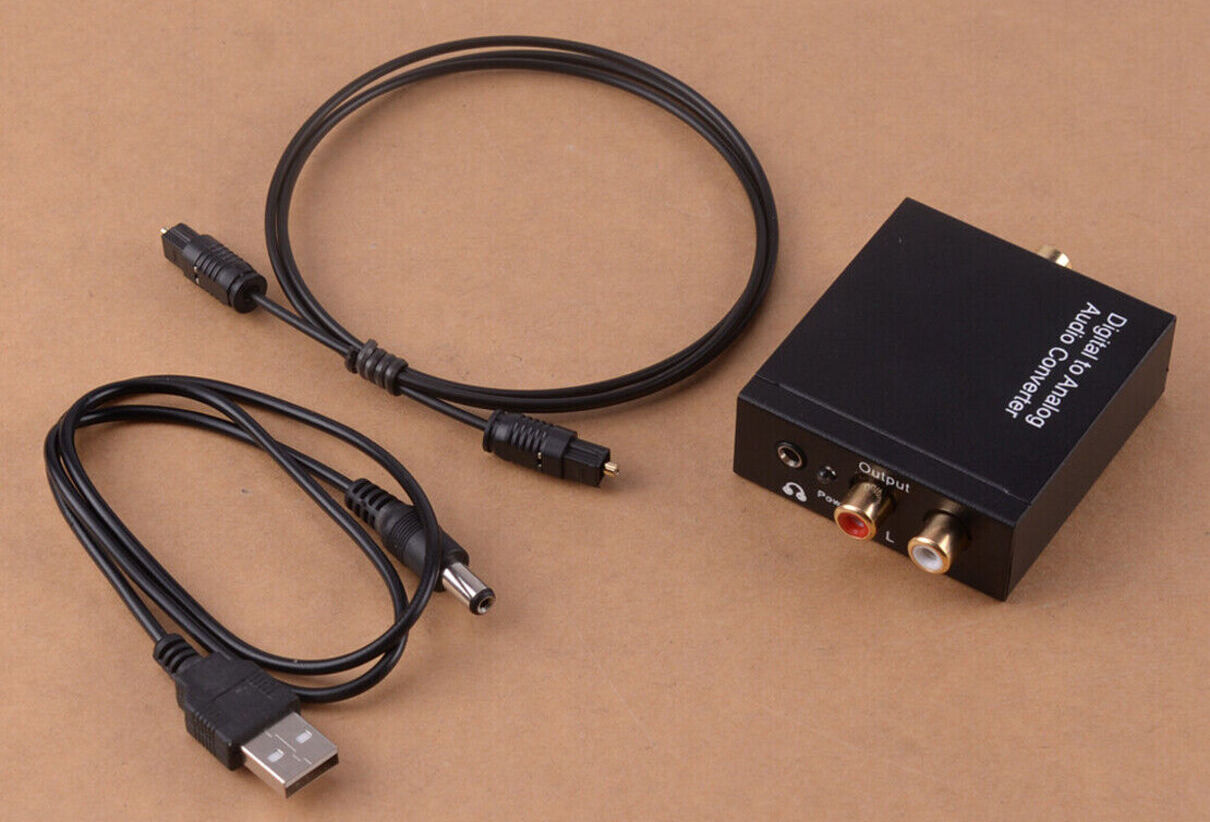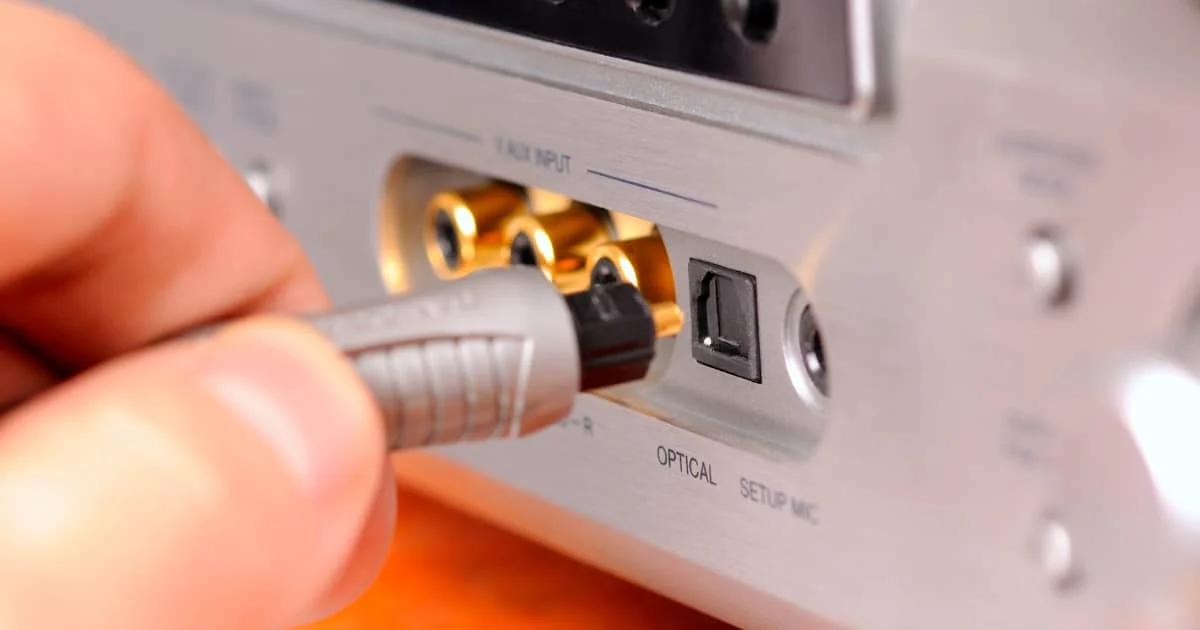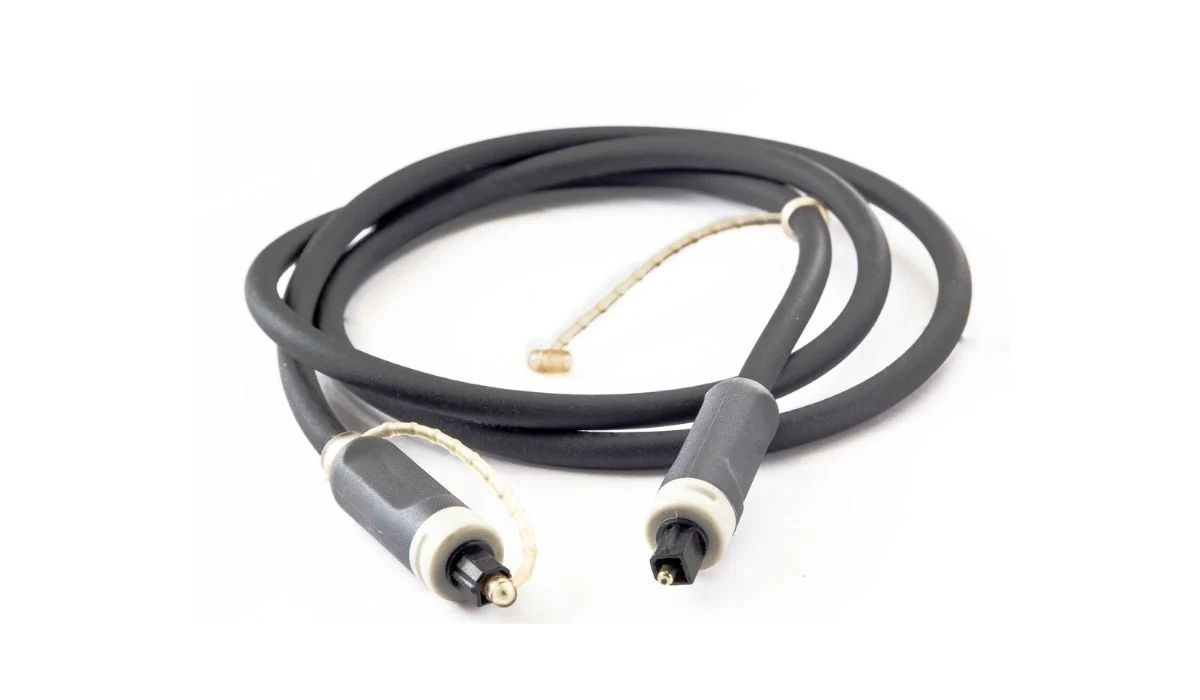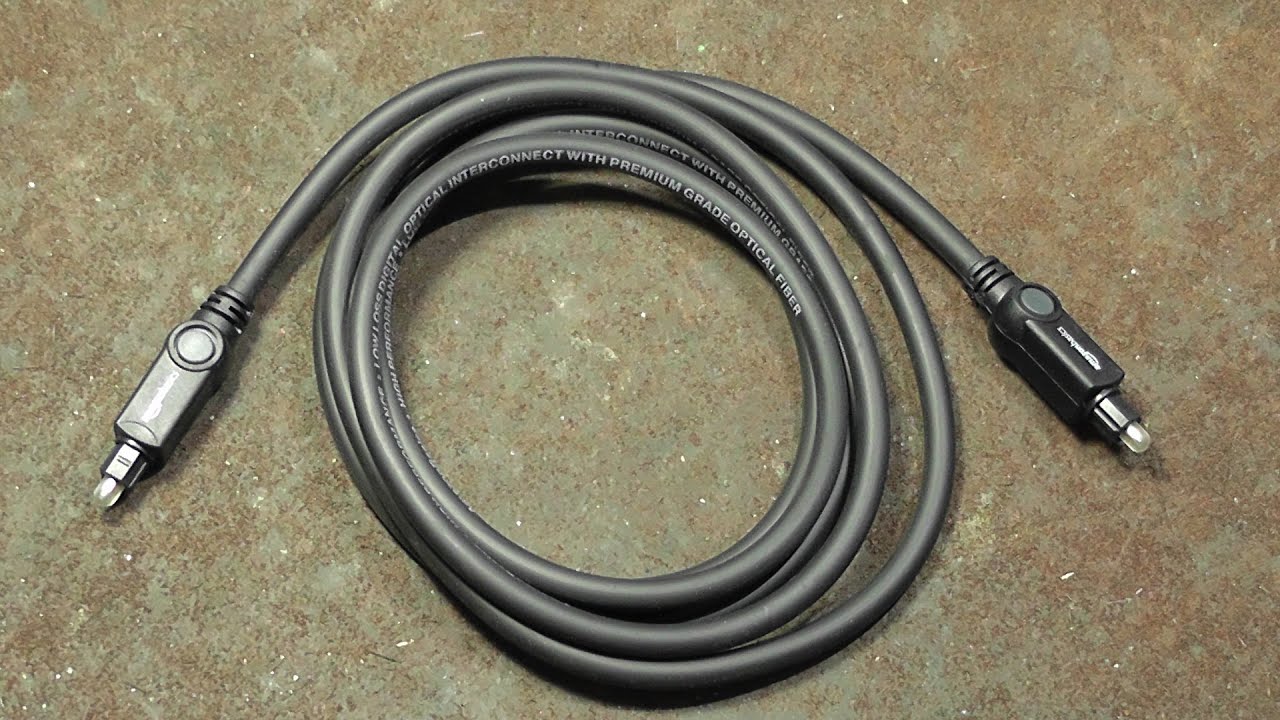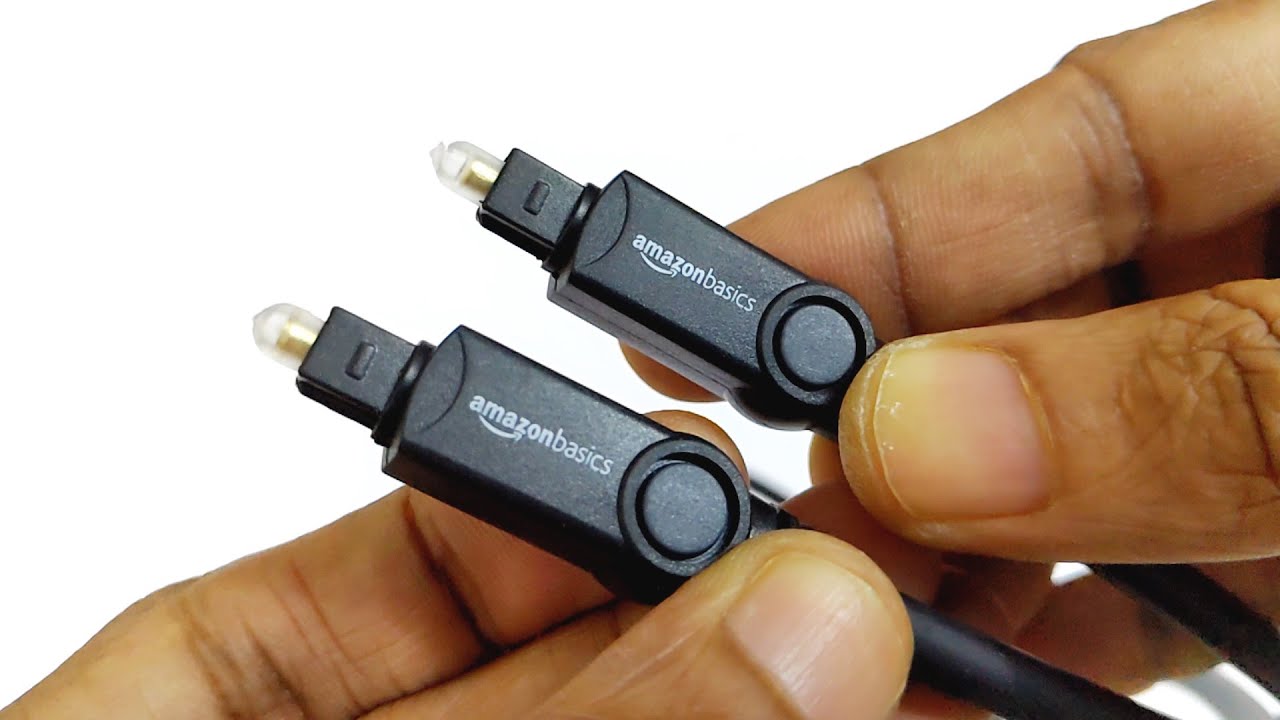Home>Production & Technology>Audio Cable>What Does An Optical Digital Audio Cable Do
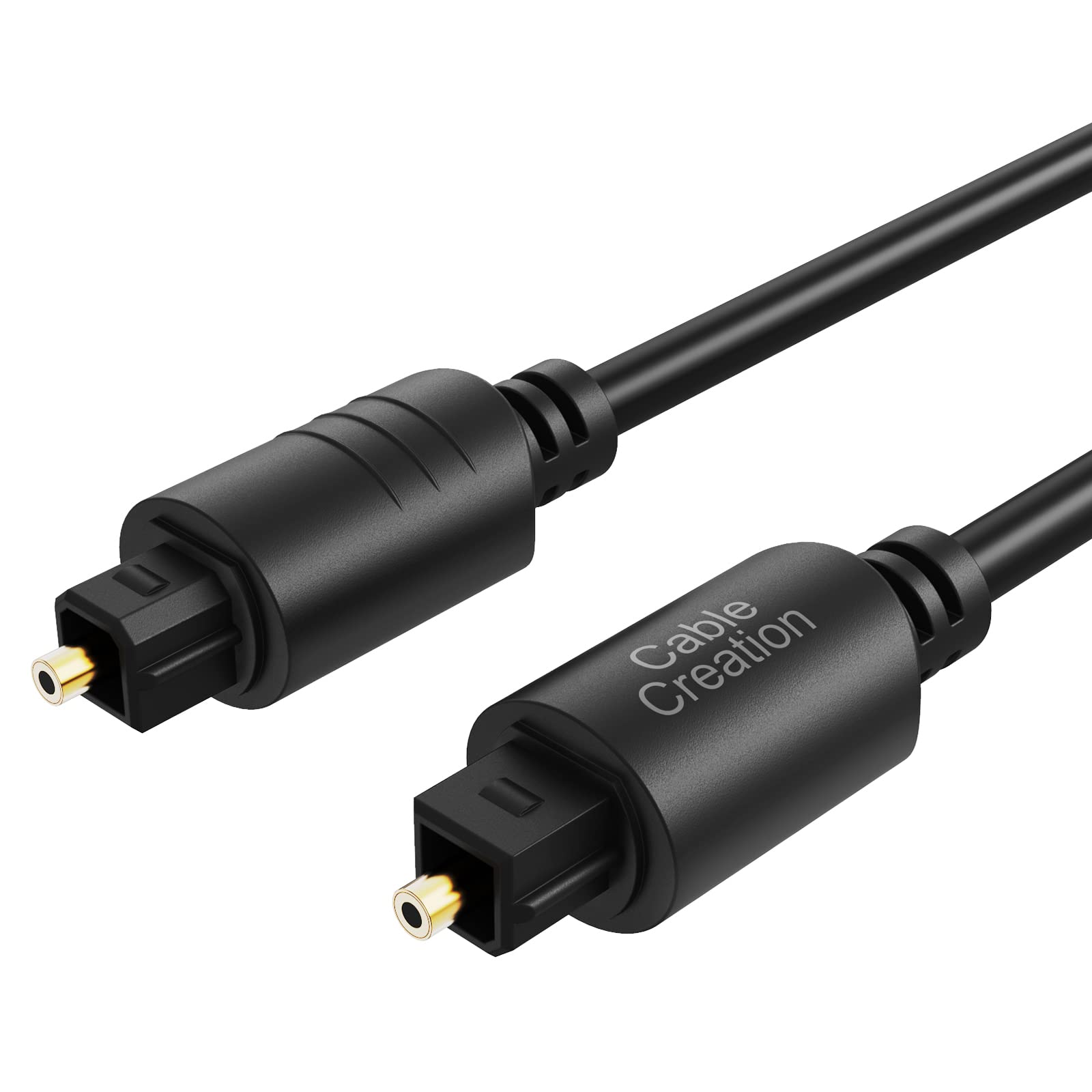

Audio Cable
What Does An Optical Digital Audio Cable Do
Modified: February 19, 2024
Discover the purpose and benefits of an optical digital audio cable. Learn how this essential audio cable enhances sound quality and connects your devices seamlessly.
(Many of the links in this article redirect to a specific reviewed product. Your purchase of these products through affiliate links helps to generate commission for AudioLover.com, at no extra cost. Learn more)
Table of Contents
- Introduction
- Understanding Optical Digital Audio Cables
- Components of an Optical Digital Audio Cable
- How Optical Digital Audio Cables Work
- Benefits of Using Optical Digital Audio Cables
- Limitations of Optical Digital Audio Cables
- Common Uses of Optical Digital Audio Cables
- Choosing the Right Optical Digital Audio Cable
- Conclusion
Introduction
Welcome to the world of audio cables, where the quality of your audio experience can be elevated to new heights. Among the various types of cables available, optical digital audio cables stand out as a superior option for transmitting high-quality sound signals with minimal interference.
Whether you are a music enthusiast, a movie buff, or a gamer seeking immersive audio, understanding optical digital audio cables and how they work can greatly enhance your audio setup. In this article, we will explore the intricacies of optical digital audio cables, their components, benefits, limitations, common uses, and how to choose the right cable for your needs.
Optical digital audio cables, also known as TOSLINK or SPDIF cables, are widely used in home entertainment systems, recording studios, and professional audio setups. They are designed to transmit digital audio signals in a format that ensures minimal degradation and maximum fidelity.
So why choose an optical digital audio cable over other audio cables? The answer lies in their ability to transmit audio signals using light rather than electrical currents. This optical transmission method eliminates the risk of electromagnetic interference, resulting in clean, clear, and distortion-free audio playback.
In the following sections, we will delve deeper into the components of optical digital audio cables, their working mechanism, as well as the benefits and limitations of using these cables in your audio setup. Let’s embark on a journey to uncover the secrets behind these remarkable audio cables, and discover how they can revolutionize your listening experience.
Understanding Optical Digital Audio Cables
Optical digital audio cables utilize fiber optic technology to transmit audio signals in the form of light pulses, rather than electrical currents. This method of transmission ensures a high level of precision and clarity, resulting in superior audio quality.
The core of an optical digital audio cable is a thin, transparent fiber optic strand, typically made of plastic or glass. This strand, known as the optical fiber, is surrounded by protective layers to safeguard it from damage and maintain its integrity. These layers typically include a cladding layer, which provides a reflective surface for the light to bounce off within the fiber, and an outer jacket for added protection.
The optical fiber within the cable has the ability to carry multiple channels of audio data simultaneously. This means that it can transmit multi-channel audio formats such as Dolby Digital or DTS, making optical digital audio cables ideal for home theater systems or surround sound setups.
At each end of an optical digital audio cable, there are connectors that allow for easy connection to audio devices. The most common type of connector is the TOSLINK connector, which uses a standardized square-shaped plug. TOSLINK connectors are designed to fit securely into audio device ports and provide a reliable connection for consistent audio transmission.
It’s important to note that optical digital audio cables are designed specifically for transmitting digital audio signals, rather than analog signals. This means that they are not suitable for connecting to devices that only support analog audio output. Additionally, optical digital audio cables do not transmit video signals, so they should not be used for video connections.
The use of fiber optic technology in optical digital audio cables offers several advantages over other types of audio cables. Firstly, the optical transmission method eliminates the risk of electromagnetic interference (EMI) and radio frequency interference (RFI), ensuring pristine audio quality. Secondly, since the cable carries light instead of electrical currents, there is no risk of voltage drops or signal degradation over long cable lengths.
Overall, understanding the technology behind optical digital audio cables is crucial for optimizing your audio setup. By utilizing these cables, you can take full advantage of their superior transmission quality and enjoy a truly immersive and high-fidelity audio experience.
Components of an Optical Digital Audio Cable
An optical digital audio cable may seem like a simple cord at first glance, but it actually consists of several important components that work together to ensure optimal audio transmission.
1. Optical Fiber: At the core of the cable is the optical fiber, which is responsible for transmitting the audio signal using light. The fiber is typically made of plastic or glass and is designed to be transparent, allowing the light to pass through without obstruction.
2. Cladding Layer: Surrounding the optical fiber is a cladding layer, which acts as a reflective surface for the light within the fiber. The cladding helps to keep the light confined within the fiber, allowing for efficient transmission without loss of signal.
3. Outer Jacket: The outer jacket serves as a protective layer for the optical fiber and cladding. It provides insulation against physical damage, such as bending or crushing, and shields the internal components from external interference.
4. TOSLINK Connectors: At each end of the cable, there are TOSLINK connectors, which are designed to fit securely into audio device ports. These connectors ensure a reliable and stable connection between the cable and the audio devices. TOSLINK connectors are typically square-shaped, with a clear plastic tip to allow the transmission of light.
5. Strain Relief: Some optical digital audio cables may include a strain relief mechanism near the connectors. This feature helps to prevent excessive stress on the cable, especially at the points where it connects to audio devices. A strain relief can prolong the lifespan of the cable by reducing the risk of cable damage due to repeated bending or pulling.
6. Metal Housing: In certain optical digital audio cables, the connectors may be encased in a metal housing. This provides additional protection for the connectors and improves overall durability. The metal housing also helps to prevent interference from external sources, ensuring a cleaner and more stable audio signal.
These components work together to ensure the smooth transmission of audio signals through the optical digital audio cable. The optical fiber carries the light pulses representing the audio data, while the cladding layer helps maintain the integrity of the light within the fiber. The outer jacket and strain relief protect the internal components from physical damage, and the TOSLINK connectors provide a reliable connection to audio devices.
Understanding these components can help you choose a high-quality optical digital audio cable that meets your specific audio needs. Whether you’re connecting a home audio system, a gaming console, or a recording studio setup, a well-built cable with robust components is essential for achieving optimal audio performance.
How Optical Digital Audio Cables Work
Optical digital audio cables work on the principle of transmitting audio signals as light pulses through a fiber optic strand. This method ensures a high-fidelity and interference-free audio transmission.
When a digital audio signal is generated by a source device, such as a CD player or a Blu-ray player, it is converted into a series of electrical pulses. These electrical pulses are then passed through a digital-to-analog converter (DAC), which converts them into light pulses.
The light pulses are directed into one end of the optical digital audio cable, where they enter the core of the fiber optic strand. The optical fiber has a mechanism known as total internal reflection, which ensures that the light remains trapped within the fiber, bouncing from the cladding layer and traveling along its length.
As the light pulses travel along the fiber optic strand, they carry the encoded audio data with them. The intensity and timing of the light pulses represent the audio signal’s digital information. The speed of light allows for rapid transmission of the audio data, ensuring real-time and accurate reproduction.
At the receiving end of the cable, the light pulses exit the fiber optic strand and are converted back into electrical signals using a light-to-electrical converter. This converter, known as a photodetector or photodiode, detects the light pulses and generates a corresponding electrical signal.
The electrical signal is then amplified if necessary and passed through a digital signal processor (DSP) or a digital-to-analog converter (DAC). These components further process the electrical signal to restore it to its original analog audio form.
The analog audio signal can then be passed to speakers or other audio devices for playback. If the optical digital audio cable is connected to a receiver or amplifier, it can decode multi-channel audio formats, such as Dolby Digital or DTS, and distribute the audio to the appropriate speakers in a surround sound setup.
Overall, the workings of an optical digital audio cable revolve around the conversion of digital audio signals into light pulses, their transmission through an optical fiber, and their subsequent conversion back into electrical signals for audio playback. This process ensures a reliable, high-quality, and interference-free transmission of digital audio data between devices.
Benefits of Using Optical Digital Audio Cables
Optical digital audio cables offer a range of benefits that make them a popular choice for audio enthusiasts and professionals alike. These benefits include:
- Superior Sound Quality: Optical digital audio cables transmit audio signals using light pulses, resulting in a pristine and high-fidelity sound reproduction. The absence of electrical interference ensures a clean audio signal without distortion or noise.
- No Signal Degradation: Since optical digital audio cables transmit light pulses instead of electrical currents, there is no risk of signal degradation over long cable runs. This means you can enjoy consistent and accurate audio quality even with longer cable lengths.
- Immunity to Electromagnetic Interference: The optical transmission method makes optical digital audio cables immune to electromagnetic interference (EMI). This is particularly beneficial in setups where there are numerous electronic devices in close proximity, as EMI can degrade audio quality in traditional copper-based cables.
- Support for Multichannel Audio Formats: Optical digital audio cables can transmit multi-channel audio formats, such as Dolby Digital and DTS, making them ideal for home theater systems and surround sound setups. You can enjoy immersive audio experiences with accurate positioning of sound elements in movies, music, and video games.
- Easy Installation and Usage: Optical digital audio cables are easy to install and use. The TOSLINK connectors provide a secure and reliable connection, and the cables are designed to fit seamlessly into audio device ports. No additional software or complex setup is required.
- No Ground Loops: Ground loops, which can cause audible hum or noise in audio systems, are eliminated with optical digital audio cables. As there is no electrical connection between devices, the risk of ground loops is minimized, resulting in cleaner and noise-free audio playback.
- Wide Compatibility: Optical digital audio cables are compatible with a wide range of audio devices, including televisions, DVD/Blu-ray players, gaming consoles, soundbars, AV receivers, and more. They can be used in both consumer setups and professional audio environments.
Overall, the benefits of using optical digital audio cables include superior sound quality, immunity to electromagnetic interference, support for multichannel audio formats, easy installation and usage, and wide compatibility. These advantages make optical digital audio cables an excellent choice for anyone seeking high-quality sound reproduction and a seamless audio setup.
Limitations of Optical Digital Audio Cables
While optical digital audio cables offer numerous benefits, it is important to be aware of their inherent limitations. Understanding these limitations can help you make informed decisions when choosing audio cables for your setup. Some of the limitations of optical digital audio cables include:
- Limited Distance: Optical digital audio cables have a limited transmission distance compared to copper-based cables. The signal efficiency can decrease over longer runs, making them less suitable for setups that require extensive cable lengths.
- No Bi-Directional Communication: Optical digital audio cables are designed for one-way communication, meaning they only transmit audio signals from the source device to the receiving device. They do not support bidirectional communication, such as sending audio signals from the receiving device back to the source device.
- Delicate Nature: Optical fibers within the cables are delicate and can be easily damaged if mishandled. Excessive bending, twisting, or pulling can break the fiber or disrupt the light transmission, affecting the audio signal quality. Care must be taken when handling and installing optical digital audio cables to avoid damage.
- Incompatibility with Analog Devices: Optical digital audio cables are specifically designed for transmitting digital audio signals. They are not compatible with analog audio devices that lack a digital-to-analog converter (DAC). If you need to connect devices that only support analog audio output, an alternative connection method, such as RCA or 3.5mm cables, may be required.
- No Video Transmission: While optical digital audio cables excel at transmitting audio signals, they cannot carry video signals. If you need to transmit both audio and video signals simultaneously, separate cables or alternative connection methods, such as HDMI, may be necessary.
- Higher Cost: Optical digital audio cables tend to be slightly more expensive compared to traditional copper-based audio cables. The cost is primarily due to the specialized fiber optic technology used in their construction.
Despite these limitations, optical digital audio cables remain a popular choice for those seeking high-quality audio transmission. By understanding the limitations and considering your specific audio setup requirements, you can determine whether optical digital audio cables are the right choice for your needs.
Common Uses of Optical Digital Audio Cables
Optical digital audio cables are widely used in various audio setups and applications, ranging from home entertainment systems to professional audio environments. Here are some common uses of optical digital audio cables:
- Home Theater Systems: Optical digital audio cables are commonly used in home theater systems to connect audio sources, such as Blu-ray players, gaming consoles, or set-top boxes, to AV receivers or soundbars. They allow for the transmission of high-quality audio signals, ensuring an immersive and cinematic audio experience.
- Surround Sound Setups: For those who enjoy the full surround sound experience, optical digital audio cables are essential. They support the transmission of multi-channel audio formats, such as Dolby Digital or DTS, ensuring accurate audio positioning and creating a realistic soundstage with the use of multiple speakers.
- Recording Studios: In professional audio environments, optical digital audio cables are frequently employed for interconnecting audio interfaces, mixers, and playback devices. The clean and interference-free transmission offered by these cables helps maintain the integrity of the audio signals during the recording, editing, and mixing processes.
- Gaming Systems: Gamers often utilize optical digital audio cables to connect gaming consoles or PCs to gaming headsets or surround sound systems. These cables deliver high-quality audio, enhancing the gaming experience by providing clear and detailed sound effects, immersive surround sound, and accurate positioning of in-game audio cues.
- Digital Audio Workstations (DAWs): In music production setups, optical digital audio cables can be used to connect audio interfaces, MIDI controllers, and other devices to a digital audio workstation. They provide a reliable and noise-free transmission of audio signals, ensuring accurate monitoring and recording of musical performances.
- Audio Streaming Devices: Optical digital audio cables are also commonly used to connect audio streaming devices such as media players and smart TVs to soundbars, amplifiers, or receivers. This enables the streaming of high-quality audio content from various online platforms and services, delivering a rich and immersive audio experience.
These are just a few examples of the common uses of optical digital audio cables. Whether it’s for home entertainment, professional audio production, gaming, or audio streaming, optical digital audio cables play a significant role in ensuring the transmission of high-quality audio signals and enhancing the overall audio experience.
Choosing the Right Optical Digital Audio Cable
When it comes to choosing an optical digital audio cable, there are a few factors to consider to ensure the best performance and compatibility with your audio devices. Here are some key points to keep in mind:
- Cable Length: Determine the required length of the cable based on the distance between your audio devices. It’s important to choose a cable that is long enough to reach without unnecessary slack, as excessive cable length can lead to signal loss and degradation.
- Optical Connector Type: Most optical digital audio cables use TOSLINK connectors, which are square-shaped connectors with a clear plastic tip. However, some devices may have alternative connector types, such as mini TOSLINK or 3.5mm optical connectors. Ensure that the cable you choose has the correct connector type for your devices.
- Quality and Construction: Look for cables that are well-constructed with high-quality materials. The optical fiber should be protected by a robust outer jacket for durability. Additionally, check for features like strain relief mechanisms or metal housings for added protection and longevity.
- Compatibility: Ensure that the optical digital audio cable is compatible with your audio devices. Check the specifications of your devices to verify that they support digital audio output through an optical connection.
- Audio Format Support: Consider the audio formats you plan to use with your devices. If you intend to transmit multi-channel audio formats like Dolby Digital or DTS, ensure that the cable supports the required bandwidth for these formats.
- Budget: Optical digital audio cables are available in a range of prices. While it’s tempting to opt for the cheapest option, investing in a higher-quality cable can offer better durability and signal transmission. Determine your budget and try to strike a balance between cost and quality.
It’s worth noting that there is no significant difference in audio quality between different optical digital audio cables. As long as the cable meets the necessary specifications and is well-constructed, the audio transmission should be of comparable quality across different brands.
Consider these factors when choosing an optical digital audio cable to ensure a reliable and high-quality connection between your audio devices. By selecting the right cable, you can maximize the performance of your audio setup and enjoy an enhanced audio experience.
Conclusion
Optical digital audio cables are a technological marvel that revolutionize the way audio signals are transmitted. By utilizing fiber optic technology, these cables offer superior sound quality, immunity to electromagnetic interference, and support for multi-channel audio formats, making them an excellent choice for various audio setups.
Throughout this article, we have explored the components, working mechanism, benefits, limitations, common uses, and factors to consider when choosing optical digital audio cables. From home theater systems to gaming setups, these cables play a crucial role in delivering immersive and crystal-clear audio experiences.
When selecting an optical digital audio cable, consider factors such as cable length, connector type, construction quality, compatibility, audio format support, and your budget. By choosing the right cable, you can ensure optimal performance and compatibility with your audio devices.
Whether you’re a music lover, a movie enthusiast, or a professional in the audio industry, understanding optical digital audio cables is essential for unlocking the full potential of your audio setup. By leveraging the benefits of optical transmission and overcoming the limitations, you can enjoy pristine sound quality and an immersive audio experience like never before.
So, whether you’re setting up a home theater system, connecting a gaming console, or working in a professional recording studio, consider incorporating optical digital audio cables to elevate your audio experience to new heights. With their advanced technology and ability to deliver exceptional sound quality, these cables truly are a game-changer in the world of audio connectivity.

